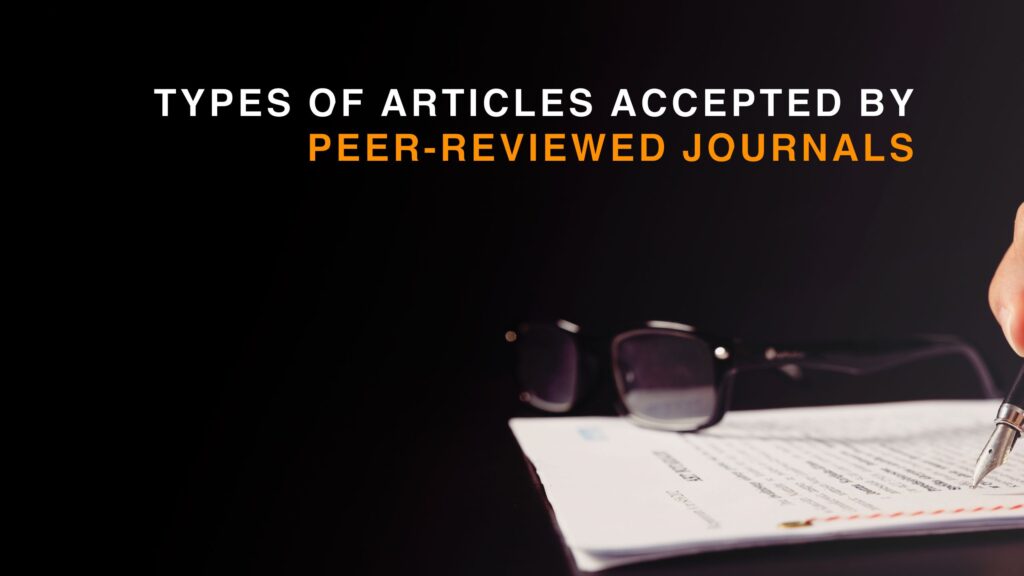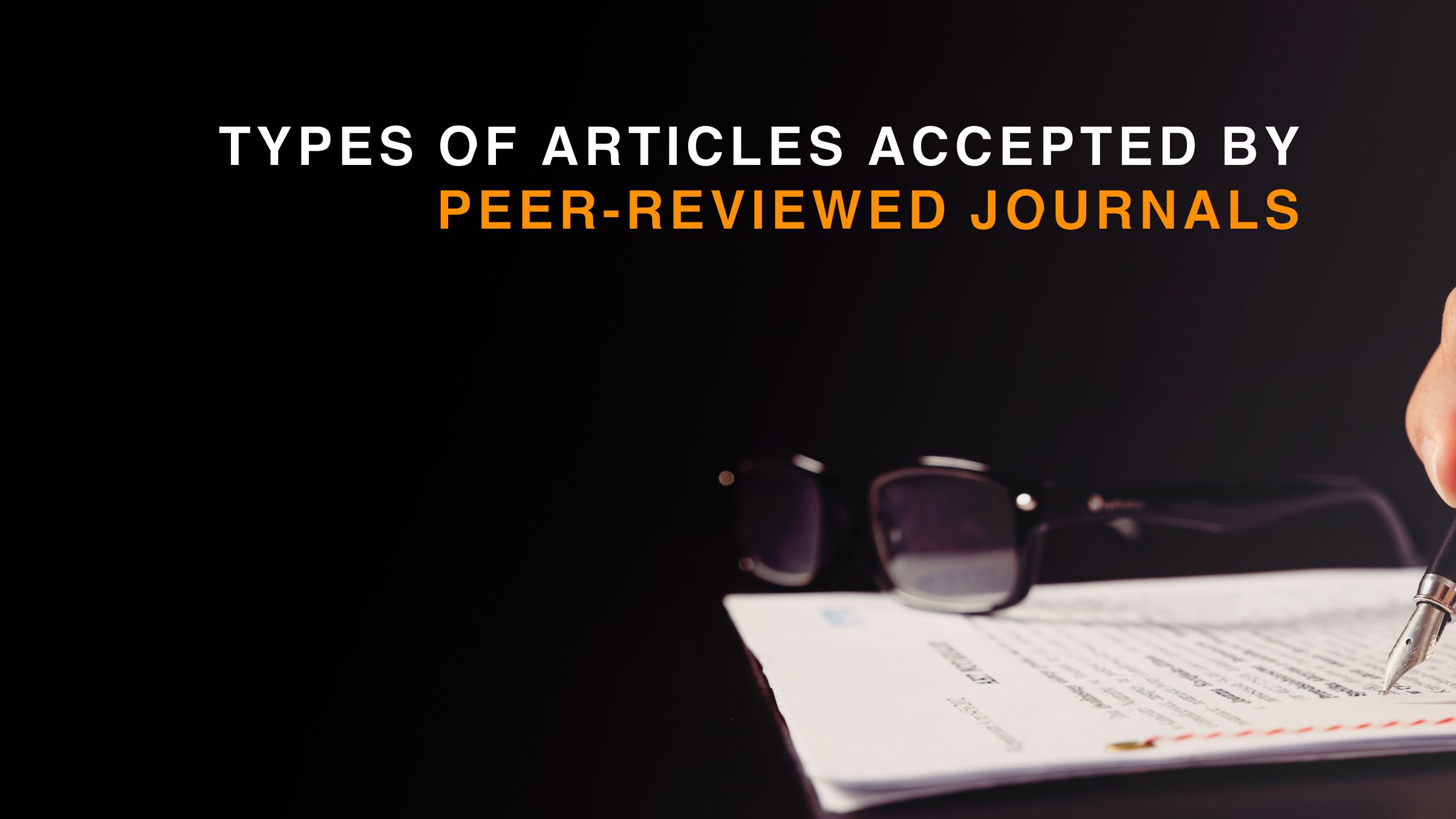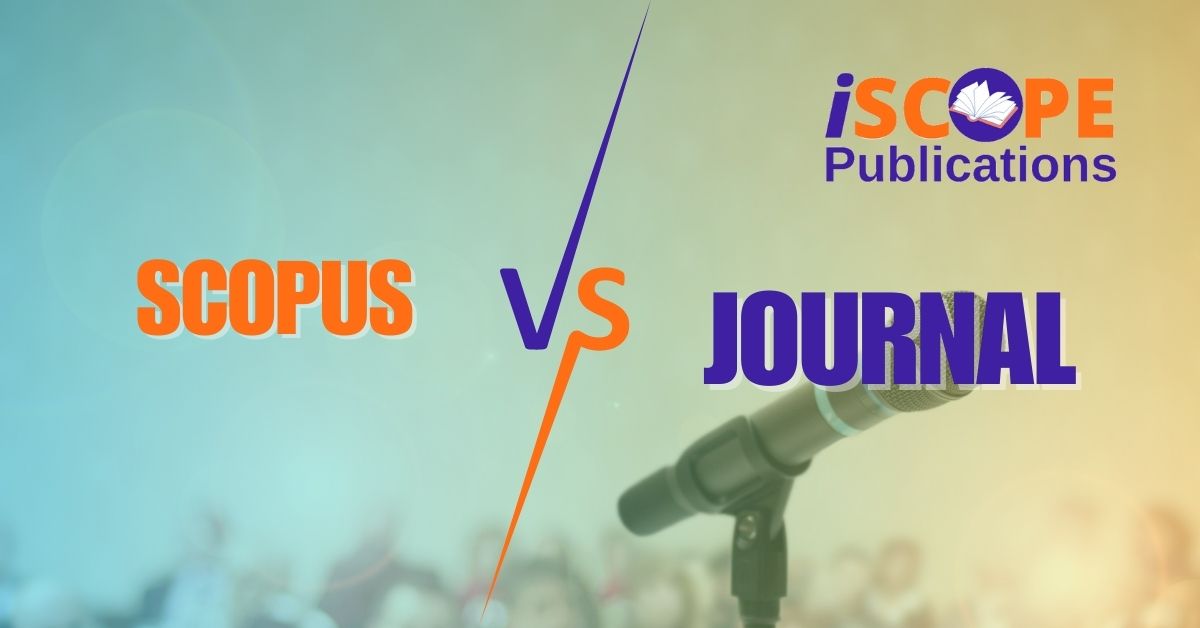In the ever-evolving landscape of academic publishing, ISCOPUS-indexed journals have emerged as a crucial platform for disseminating credible, peer-reviewed research. Doctoral candidate, or an early-career researcher, understanding the types of articles accepted by peer-reviewed journals—especially those indexed in ISCOPUS—is fundamental to your publishing journey.
ISCOPUS (also referred to as SCOPUS in various indexing databases) stands as a reputable, multidisciplinary abstract and citation database that indexes journals known for rigorous editorial standards. To have a manuscript accepted in one of these prestigious journals, researchers must not only produce high-quality content but also align their submissions with the specific types of articles accepted.

Original Research Articles
Definition & Importance
Original research articles constitute the bulk of publications in peer-reviewed journals. They present new and original research findings, contributing fresh knowledge or discoveries in a particular scientific or academic field.
Structure
Typically structured into:
- Introduction: Sets the research context, objectives, and hypotheses.
- Methods: Describes the procedures, materials, and techniques used.
- Results: Presents the data collected, often with statistical analysis.
- Discussion: Interprets results, addresses implications, and relates findings to existing literature.
ISI/SCOPUS Context
Original research articles are highly valued and frequently cited in ISI and SCOPUS-indexed journals, often determining the journal’s impact factor and h-index.
2. Review Articles
Definition & Importance
Review articles do not report original experiments but critically evaluate existing research. They synthesize knowledge, identify trends, and reveal gaps that require further study.
Types of Review Articles
- Narrative Reviews: Broad overviews of a topic.
- Systematic Reviews and Meta-Analyses: Employ rigorous methods to aggregate and analyze multiple studies.
Role in ISI/SCOPUS Journals
Review articles tend to receive extensive citations and are key drivers for journal impact indices in ISI and SCOPUS databases. They provide essential resources for new researchers entering a field.
3. Short Communications / Letters
Definition & Importance
These are concise reports of preliminary but significant findings or small sets of data that do not warrant a full-length article but deserve rapid dissemination.
Uses
- Quick sharing of breakthrough or urgent results.
- Comments on recent publications.
- Debates or clarifications within the academic community.
In Indexed Journals
Short communications are common in high-impact journals and provide opportunities to publish emerging results rapidly in ISI and SCOPUS-indexed venues.
4. Case Studies
Definition & Importance
Case studies provide detailed examination of a single case, event, or decision, often used in disciplines like medicine, business, law, and social sciences.
Characteristics
- Focus on a real-world situation.
- Detailed qualitative or quantitative data.
- Extract lessons, highlight challenges or illustrate applications.
Indexed Journal Use
While less common in some fields, case studies add depth and practical perspective to research portfolios in ISI/SCOPUS journals, especially in applied sciences.
5. Methodologies
Definition & Importance
Methodology articles present new or refined research methods, experimental techniques, or analytical procedures.
Purpose
- Improve the rigor and reproducibility of research.
- Introduce innovative tools.
- Provide detailed protocols.
Relevance to ISI/SCOPUS
Well-written methods papers tend to attract citations and facilitate advancements across multiple studies and disciplines registered in ISI/SCOPUS.
6. Tutorials
Definition & Importance
Tutorial articles educate readers on complex methods or theories in an accessible manner.
Characteristics
- Step-by-step instructions.
- Visual aids or practical examples.
- Target novice or multidisciplinary audiences.
Value in Indexed Journals
By broadening the readership and comprehension, tutorials contribute to interdisciplinary research proliferation in ISI and SCOPUS journals.
Other Article Types Commonly Found in Peer-Reviewed Journals
- Letters to the Editor: Brief responses or critiques related to previously published articles.
- Editorials: Opinion pieces, often written by editors or invited experts, discussing trends or journal policies.
- Commentaries: Critical evaluations, perspectives, or reflections on published research.
- Hypothesis and Theory Articles: Propose new theories or hypotheses with supporting argumentation or limited data.
- Classification Articles: Offer structured taxonomies or categorizations in emerging disciplines.
- Registered Reports: Pre-registered protocols peer-reviewed before data collection to improve research transparency and reproducibility.
Publishing in ISI/SCOPUS Indexed Journals
- Originality and novelty remain paramount: journals prioritize innovative findings buttressed by sound methodology.
- Compliance with journal-specific guidelines is critical (formatting, length, ethical standards).
- Peer review rigor impacts acceptance and indexing; high standards characterize ISI and SCOPUS journals.
- Understanding the target audience and article type helps maximize the impact and citation potential.
Peer-reviewed journals accept a wide spectrum of article types, each catering to different research goals and scholarly needs. For academics aiming to publish in ISI and SCOPUS indexed journals, recognizing the nuances of each type—from original research to reviews, case studies, and methodological tutorials—is essential.
FAQs
1. What types of articles are commonly accepted by peer-reviewed journals?
Peer-reviewed journals typically accept a variety of articles, including original research articles, review articles, case studies, short communications, letters to the editor, and technical notes. Each type serves a specific academic purpose and follows unique formatting guidelines.
2. What is an original research article?
An original research article presents new data or findings based on experiments, surveys, or observations. It includes sections such as Abstract, Introduction, Methods, Results, Discussion, and References.
3. How is a review article different from a research article?
Review article summarizes and synthesizes existing research on a particular topic. Unlike original research articles, it does not present new experimental data but provides critical analysis and future research directions.
4. What is a case study, and when is it accepted?
Case study details a specific instance (such as a unique medical case or a business strategy) to illustrate broader principles. It is often accepted in clinical, business, and social science journals.
5. What are short communications?
Short communications (or brief reports) are concise articles that report significant findings without the full elaboration of a standard research article. They are suitable for rapid dissemination of results.
6. Are technical notes accepted by journals?
Yes, technical notes are accepted by many journals. These provide insights into new methods, tools, or technologies, and are useful for sharing technical advancements or modifications.
7. What is a letter to the editor in academic publishing?
Letter to the editor typically responds to a previously published article, offering criticism, support, or additional insights. It is usually short and can spark scholarly debate.
8. Can commentary articles be peer-reviewed?
Yes, some commentary or opinion articles undergo peer review, especially when they offer significant expert insight into current issues or emerging trends in the field.
9. Do all journals accept every article type?
No, not all journals accept all article types. It’s important to check the journal’s “Instructions for Authors” or “Aims and Scope” section to understand which types they accept.



